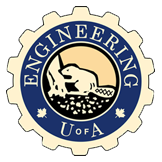Structural Health Monitoring
Structural Health Monitoring (SHM) has become a very important area in civil engineering for evaluating the performance of critical civil infrastructure systems such as bridges. One of the most important issues with continuous SHM is the environmental effects (such as temperature, humidity, wind) on the measurement data, which can produce bigger effects in the response of the structures than the damage itself. Damage detection is considered as one of the most important components of SHM and without appropriately considering the environmental factors in the damage detection process, the efficiency and accuracy of this process may be questionable for practical applications. Temperature is considered as one of the most important and influential environmental effects on structures, especially in bridges. In this study, an artificial neural network based approach integrated with a sensor clustering based time series analysis is employed for damage detection under the temperature effects. Damage features from the time series analysis method (will be referred as DFARX) can indicate the damage, if there is no presence of detrimental temperature effect. However, if present, temperature effect can lead to false indication of the damage existence in the structure. Neural network damage features (DFANN) are used to compensate these effects. Final damage features (DF) are computed as absolute difference between these two damage features. The proposed methodology is applied to a footbridge finite element model and it is demonstrated that the method can successfully determine the existence, location and extent of the damage for different types of damage cases under environmental temperature variability, and with different levels of the noise. Finally, recommendations for the future work, as well as the limitations of the proposed methodology are addressed.
The research area to improve the performance of Civil Infrastructure System (CIS) for creating a smart, sustainable and resilient infrastructure network are:
- System Dynamics and Monitoring
- Novel Technologies for Sustainable, Smart and Resilient CIS
- Structural Dynamics, Structural System Identification, Damage Detection
- Structural Health Monitoring (SHM)
- Digital Signal & Image Processing and Statistical Pattern Recognition for SHM


